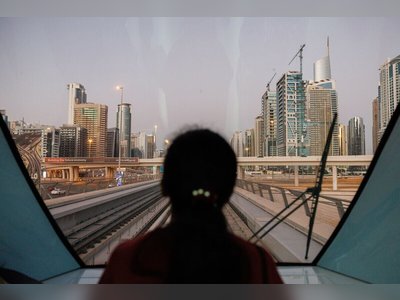
Dubai Real Estate Market Faces Pressure from Rising Supply and Price Corrections
An influx of over 200,000 new housing units anticipated to affect rental prices and yield stability in Dubai through 2026.
The Dubai real estate market is set to experience significant pressure on rental prices in 2025 and 2026, driven by a projected addition of over 200,000 new residential units.
This influx comes as market analysts, including those from a global ratings agency, suggest that the local property market's absorption capacity will be tested amid declining rental yields.
According to recent assessments, the average gross rental yield for residential properties in Dubai fell by approximately 30 basis points between the second half of 2024 and the first quarter of 2025, although it remains healthy at around 7.4 percent.
Experts anticipate that while a market crash akin to the 2008 financial crisis is unlikely, a moderate price correction is on the horizon due to the oversupply of residential units, particularly if high-interest rates persist.
In terms of development, after 30,000 units were delivered in 2024, the Dubai property market is set to see 210,000 new units enter the market within a two-year span, with 90,000 expected in 2025 and 120,000 in 2026. This marks an increase in supply that is projected to outpace population growth, which is expected to remain around 5 percent.
Despite signs of rental market stabilization, with zero growth in average apartment rates and a 1 percent increase in villa rates in the first quarter of 2025, year-on-year growth remains robust, reflecting a 9 percent increase for apartments and a 7 percent increase for villas.
This underlying demand continues to be bolstered by constrained supply in certain neighborhoods, encouraging rental appreciation in select areas.
The introduction of the Smart Rental Index by the Dubai Land Department aims to promote rental price stability in the city.
Real estate consultancy firms predict continued market adjustments, stating that while established communities may face supply constraints, the overall market is expanding with a significant increase in new deliveries and future supply pipelines.
Simultaneously, the property market is witnessing a shift in financial models, as developers are expected to moderate pre-sale payment models for investors, moving from 70 percent upfront payments to a 50 percent model during construction.
This restructuring is anticipated to facilitate easier access to new property acquisitions as high-net-worth individuals and foreign investment buoy market demand.
As the population of Dubai approaches 4 million, significant demographic growth continues to fuel real estate dynamics.
Notably, the corporate lending balance for real estate has seen a decline, with banks tightening their lending standards in response to evolving market conditions and investor profiles.
In a move towards digital transformation, Dubai has seen a surge in interest in tokenized real estate ownership, with over 6,000 individuals joining a waitlist for a blockchain-based platform that enables fractional ownership of properties.
This initiative has reportedly attracted a diverse range of investors, with 70 percent being first-time buyers in the Dubai property market.
The Dubai Land Department has partnered with various regulatory bodies to support this digital initiative, which is part of a broader economic strategy aimed at enhancing the efficiency and accessibility of real estate transactions.
This influx comes as market analysts, including those from a global ratings agency, suggest that the local property market's absorption capacity will be tested amid declining rental yields.
According to recent assessments, the average gross rental yield for residential properties in Dubai fell by approximately 30 basis points between the second half of 2024 and the first quarter of 2025, although it remains healthy at around 7.4 percent.
Experts anticipate that while a market crash akin to the 2008 financial crisis is unlikely, a moderate price correction is on the horizon due to the oversupply of residential units, particularly if high-interest rates persist.
In terms of development, after 30,000 units were delivered in 2024, the Dubai property market is set to see 210,000 new units enter the market within a two-year span, with 90,000 expected in 2025 and 120,000 in 2026. This marks an increase in supply that is projected to outpace population growth, which is expected to remain around 5 percent.
Despite signs of rental market stabilization, with zero growth in average apartment rates and a 1 percent increase in villa rates in the first quarter of 2025, year-on-year growth remains robust, reflecting a 9 percent increase for apartments and a 7 percent increase for villas.
This underlying demand continues to be bolstered by constrained supply in certain neighborhoods, encouraging rental appreciation in select areas.
The introduction of the Smart Rental Index by the Dubai Land Department aims to promote rental price stability in the city.
Real estate consultancy firms predict continued market adjustments, stating that while established communities may face supply constraints, the overall market is expanding with a significant increase in new deliveries and future supply pipelines.
Simultaneously, the property market is witnessing a shift in financial models, as developers are expected to moderate pre-sale payment models for investors, moving from 70 percent upfront payments to a 50 percent model during construction.
This restructuring is anticipated to facilitate easier access to new property acquisitions as high-net-worth individuals and foreign investment buoy market demand.
As the population of Dubai approaches 4 million, significant demographic growth continues to fuel real estate dynamics.
Notably, the corporate lending balance for real estate has seen a decline, with banks tightening their lending standards in response to evolving market conditions and investor profiles.
In a move towards digital transformation, Dubai has seen a surge in interest in tokenized real estate ownership, with over 6,000 individuals joining a waitlist for a blockchain-based platform that enables fractional ownership of properties.
This initiative has reportedly attracted a diverse range of investors, with 70 percent being first-time buyers in the Dubai property market.
The Dubai Land Department has partnered with various regulatory bodies to support this digital initiative, which is part of a broader economic strategy aimed at enhancing the efficiency and accessibility of real estate transactions.
Translation:
Translated by AI











